Personal Training and Massage Therapy
Over the years we've had several personal trainers come through our doors hoping to expand their practices with a new set of skills. It seems like a winning combination to us, too. Help your clients grow new muscle tissue and then help your clients relax said muscle tissue.
We asked Cody Pooler, a recent Soma graduate as well as personal trainer, to speak about linking to two professions together.
What brought you to personal training?
I started training when I was 13 and truly enjoyed lifting and the self competition it brought. I trained in a makeshift gym at my coach’s house and I wanted to recreate what he had given me when I was so young.
What's your hometown?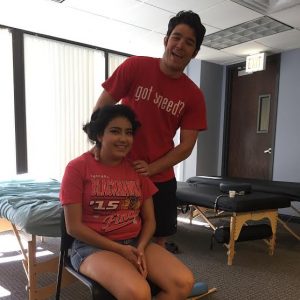
I’m from Downers Grove, Illinois.
What other schooling did you receive?
I received an associate’s degree in Liberal Art and Sciences from Triton College. As a trainer I learned from my mentor and did a lot of the learning on my own.
What brought you to massage?
I practiced Activation, a technique by Douglas Heel, and implemented my own type o
f muscle manipulation into training and recovery sessions and thought it would be a good idea to learn more and start to charge people for my services!
Have you been able to blend the two into your practice, or do you plan on doing so?
I try to blend some type of activation/muscle manipulation into every training session
And what are your career goals?
An end goal for me is to be a strength and conditioning coach and massage therapist for a professional sports team.
Do you think your goals are more achievable after attending Soma?
After attending Soma I feel much more confident in knowing the ins and outs of the body. With this confidence, obtaining that goal has become much easier. Soma prepared me for a life long career in the massage business and I would recommend it to anyone who is in the health industry.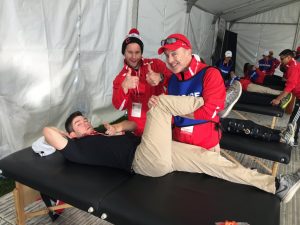
One Of Our Hardworking Evening/Weekend Classes
Sometimes we forget to talk about these guys. That's because they're commonly the ones quietly working hard and not bothering anyone. Over the course of 15 months they work their 40 hours/week day jobs, or they raise their families, and they still find time to train and study for a rewarding new career in Clinical Massage Therapy.
These are not the squeaky wheels, so we sometimes forget they are there. But they are there, and they're working every bit as hard as the day groups, often even harder. So we're dedicating this week's newsletter to the evening/weekend students, and all the time and energy they commit to our program with minimal complaints and maximum results.
Here are some pics we snuck of 1608E hard at work doing DDD treatments.
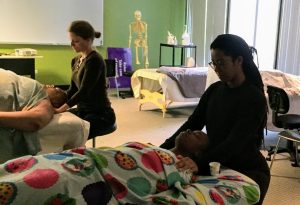
(Above: Diana and Amelia focused on the task at hand, so to speak.)
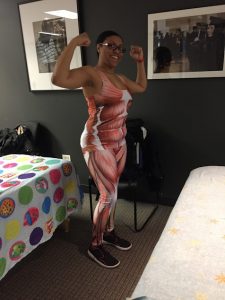
(Above: Ronae shows off her muscles. Literally!)
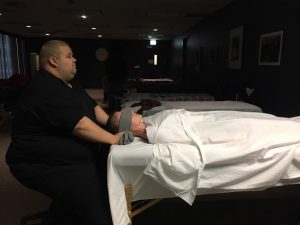
(Above: Rose prepares to lengthen his client's neck.)
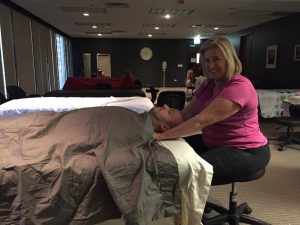
(Above: Sally can't ignore the camera.)
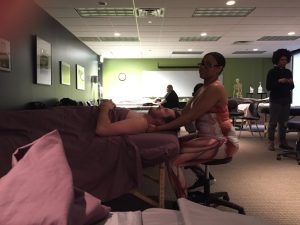
(Above: Ronae puts those muscles to good use.)
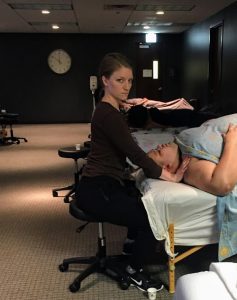
(Above: Amelia threatens to maim whoever takes her picture.)
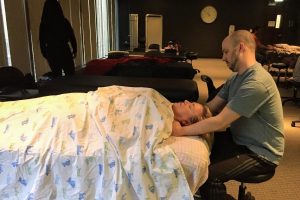
(Above: Jeremy wonders how relaxed will be too relaxed?)

(Above: Marek's beard itches, but he can't scratch it for the next 25 minutes.)
Massage for Knee Arthritis
From Massage Magazine
Within the massage for arthritis group, the intervention resulted in significant immediate changes, such as an increase in internal rotation ROM on the first day of the study; an increase in standing flexion ROM on the last day of the study; and an increase in supine flexion ROM on both the first and last days of the study.
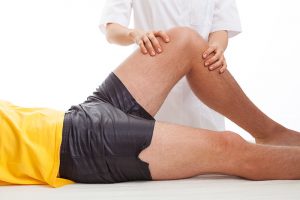
The research also revealed that external rotation pain decreased in the massage group and increased in the wait-list control group over the four-week study period.
Internal rotation ROM increased in the massage group throughout the intervention period as well. Internal rotation pain decreased in the massage group during the four-week period and increased in the wait-list control group. Both standing flexion ROM and supine flexion ROM increased for the massage group throughout the intervention period.
As far as performance, as measured by the adapted Short Physical Performance Battery, the data suggested that the massage group, as opposed to the wait-list control group, experienced decreased sitting pain, reduced time walking an eight-foot distance, and decreased standing-on-one-leg pain.
Standing-on-one-leg pain actually increased in the wait-list control group.
On the self-report measures, the massage group versus the wait-list control group had a decreased WOMAC pain score, a decreased WOMAC activity score, a decreased WOMAC total score and a decreased sleep disturbance global score.
Read the rest here.
Massage and Autoimmune Disease
From Massage Magazine
A massage therapist needs to be mindful of the waxing-and-waning effects within a client’s body in accordance with any autoimmune condition. Generally, full-body circulatory massage is not recommended, as this circulates white blood cells more rapidly, thereby increasing their efficiency. This greater efficiency can exacerbate the client’s condition.
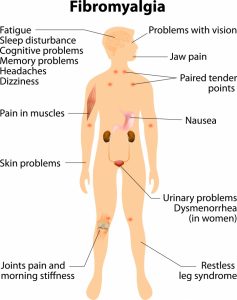
The following is a list of recommendations regarding massage therapy for autoimmune disease to alleviate body systems, yet not increase circulation significantly:
- Abdominal massage to affect organs will greatly improve organ efficiency. A form of abdominal massage called chi nei tsang, presented in many Chinese-medicine-related programs, can be a welcome addition to one’s practice in this regard.
- Stretching allows a client to receive myofascial benefit with minimal circulatory impact. Great stress relief comes from longer myofascial tissue.
- Myofascial release is a gentle means to freeing restrictions within the myofascial network of the body. This approach may be more easily received by a client, especially during flare-ups.
- Thai massage and shiatsu are practices that combine stretching with focused intention upon certain muscle regions and musculotendon pathways. These modalities can easily be more or less intense depending on the client’s state on any given date.
Final considerations involve procedures with treatment planning. Be flexible with session timing, for example. Sessions may need to be shorter in duration and may need to be skipped when a client is having flare-ups.
Read the rest here.
Boomers & beyond: Therapist brings the benefits of massage to seniors
From American Press
For Deborah Faul, it’s about connection.
Her senior-focused massage therapy service, she says, provides clients with respite from the pains of aging and some much-needed human touch.
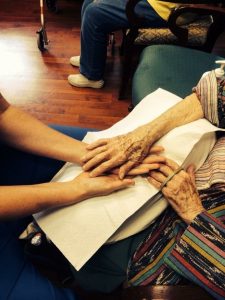
“These are people who don’t always receive the validation, dignity and respect they deserve,” Faul said. “These moments I spend with them, they’re sacred moments.”
Faul operates True Balance & Tranquility, LLC, from the wellness center at The Verandah, Graywood’s assisted living facility. She meets with private clients, too, who range from bedridden to physically active.
Read the rest here.


 GET STARTED
GET STARTED



 Call Us
Call Us Get Information
Get Information Tour Soma
Tour Soma Apply Now
Apply Now